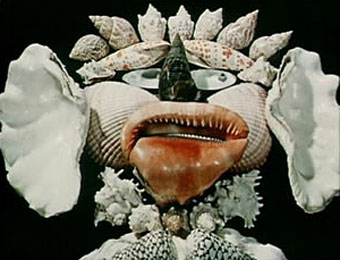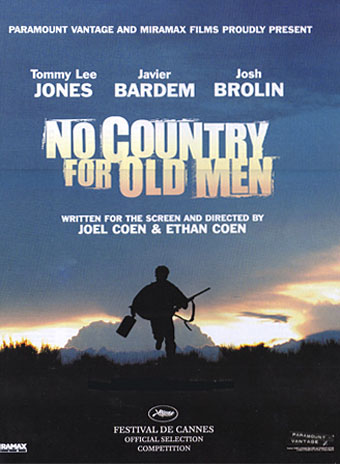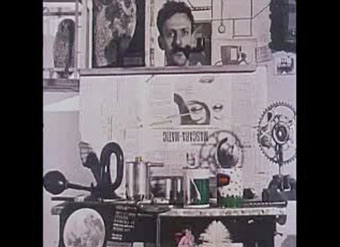Dream works: Jan Svankmajer
Marina Warner on the great Surrealist.
Category: {film}
Film
Jan Svankmajer: The Complete Short Films
Historia Naturae, Suita (1967).
Another very welcome DVD release from the BFI. Svankmajer’s shorts have always been my favourites of his film work. I love his Alice feature film (for me, the best screen adaptation of Alice in Wonderland), and Faust (although the jabbering devils get annoying) but on the whole his longer films don’t seem to work as well as the earlier works. The short films present his Surrealist intentions in their purest expression, whether using his own jerky form of stop-motion animation or the aggressive montage seen in The Ossuary and elsewhere.
As with the Brothers Quay release from last year, there’s a great set of extras with this. If you’re curious about the films but have never seen them, searching for his name on YouTube turns up a few examples.
The most comprehensive DVD collection ever assembled of all 26 short films by the legendary Czech Surrealist filmmaker-animator Jan Svankmajer is released by the BFI on 25 June. Technically and conceptually astonishing in their own right, these films are also as remarkable for their philosophical consistency as for their frequently mind-boggling imagery.
Drawing on a tradition of Surrealism based in the capital of magic and alchemy—Prague—Svankmajer uses a range of techniques, combining live action, puppet theatre, stop-motion and drawn animation, claymation, cut-outs, re-edited archive footage and montage.
With nearly eight hours of material, compiled on three discs and packaged in a deluxe digipack with a 56-page illustrated booklet, the DVD is a truly must-have item for any Svankmajer fan. Its release follows a visit by the director to BFI Southbank on 29 May to discuss his work, after a preview of his latest film Lunacy. Lunacy opens for a two-week run on 1 June, part of a complete Jan Svankmajer retrospective season at BFI Southbank from 1–16 June, a selection of which will then go on tour.
Compiled by BFI Screenonline’s Michael Brooke, who also produced last year’s highly acclaimed release Quay Brothers: The Short Films 1979–2003, the DVD collection spans almost 30 years, from The Last Trick (1964) to Food (1992). All the classics are included—Punch and Judy, The Flat, Jabberwocky, Dimensions of Dialogue, Down to the Cellar and both versions of The Ossuary (with the original banned tour-guide soundtrack and the replacement music track), alongside many British video premieres. It even contains the music video made for former Stranglers front man Hugh Cornwell (Another Kind of Love) and two ‘Art Breaks’ created for MTV.
The third disc of two-and-a-half hours of extra material includes a bonus short, Johanes Doktor Faust (1958); the original 54-minute version of The Cabinet of Jan Svankmajer (1984) with a brand new introduction by the Quay Brothers; the French documentary Les Chimères des Svankmajer (2001); interviews with Jan and Eva Svankmajer and examples of their work in other media. There’s also a chance to see some Svankmajer special effects, created for commercial Czech features when he was banned from making his own films. The 54-page booklet includes an introduction to Svankmajer by Michael O’Pray; detailed film notes by Michael Brooke, Simon Field, Michael O’Pray, Julian Petley, A.L. Rees and Philip Strick; notes on the extras and much more.
Previously on { feuilleton }
• Short films by Walerian Borowczyk
• Taxandria, or Raoul Servais meets Paul Delvaux
• The Brothers Quay on DVD
• Barta’s Golem
No Country for Old Men
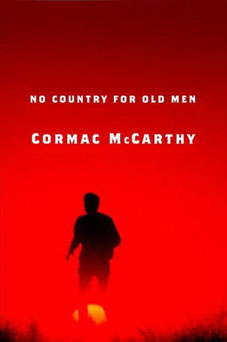 One of the posters for the new Coen Brothers’ film has finally surfaced and the design is pretty similar to the original book jacket by Chip Kidd (later spoiled with poor type layout in the UK edition). The book cover looks better but we’ll probably see some variations on the poster design anyway. I’m reading the novel at the moment and loving it, so the prospect of a Coens adaptation is rather mouthwatering. This should see them back on form again after the calamity of The Ladykillers and they do the hardboiled thing really well. Cormac McCarthy’s dialogue is spare and witty; Ethan Coen’s characters are either excessively verbose or they hardly speak at all so it’s easy to see the appeal, especially when the plot isn’t so far removed from Blood Simple or Fargo. I’ll be waiting impatiently now for the trailer.
One of the posters for the new Coen Brothers’ film has finally surfaced and the design is pretty similar to the original book jacket by Chip Kidd (later spoiled with poor type layout in the UK edition). The book cover looks better but we’ll probably see some variations on the poster design anyway. I’m reading the novel at the moment and loving it, so the prospect of a Coens adaptation is rather mouthwatering. This should see them back on form again after the calamity of The Ladykillers and they do the hardboiled thing really well. Cormac McCarthy’s dialogue is spare and witty; Ethan Coen’s characters are either excessively verbose or they hardly speak at all so it’s easy to see the appeal, especially when the plot isn’t so far removed from Blood Simple or Fargo. I’ll be waiting impatiently now for the trailer.
Previously on { feuilleton }
• In praise of Cormac
• The poster art of Bob Peak
• A premonition of Premonition
• Cormac McCarthy book covers
• Perfume: the art of scent
• Metropolis posters
• Film noir posters
Short films by Walerian Borowczyk
Les Astronautes (1959).
A nice collection of shorts by Walerian Borowczyk (1923–2006) at Ubuweb including this animated piece from 1959 which was co-directed by Chris Marker. The style is immediately reminiscent of that employed by Raoul Servais in Harpya and other films; it’s also not far removed from Terry Gilliam’s animation but it predates both. Also of note is Une Collection Particulière from 1973, a brief but fascinating look at a collection of antique pornographic toys and other adult items from the collection of Pieyre De Mandiargues. And L’Amour Monstre de tous les Temps from 1977 is a portrait of contemporary erotic Surrealist painter Ljuba Popovic at work. Borowczyk spent the Seventies making soft porn features such as Immoral Tales and The Beast, so the subject matter of the later films isn’t so surprising.
Previously on { feuilleton }
• Taxandria, or Raoul Servais meets Paul Delvaux
• Monsieur Chat
• The Brothers Quay on DVD
• Sans Soleil
• Barta’s Golem
• The art of Ljuba Popovic
New things for June
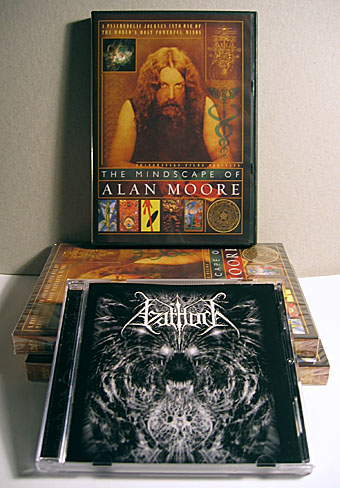
New and not-so-new work-related arrivals include The Mindscape of Alan Moore DVD which finally arrived after the usual postal delays caused by bank holidays and other trivia. Those interested can order this from the Shadowsnake Films site.
And copies of the CD from metal band Azathoth turned up a few weeks ago but I’d neglected to mention this. My sole involvement was letting them use my Azathoth portrait from The Haunter of the Dark for the cover but they’ve done a nice job with the rest of the design. Their insectile name/logo fits very well with the picture.

